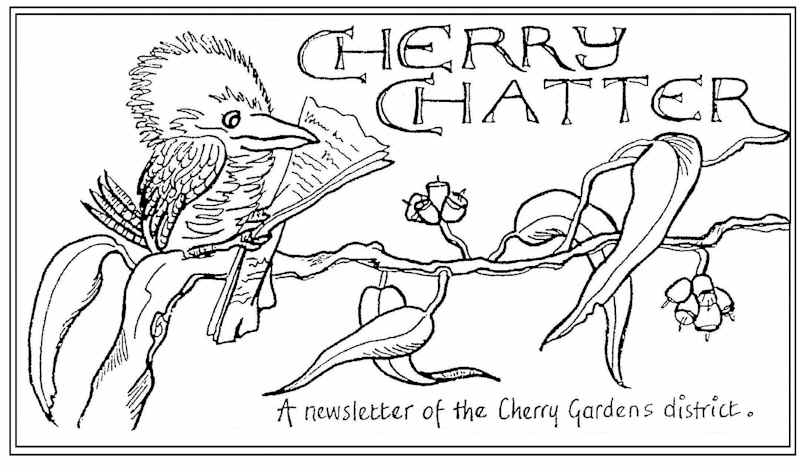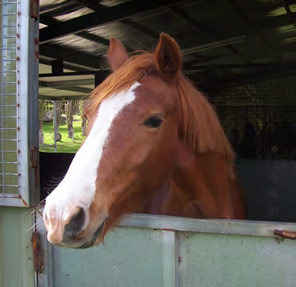Over the stable door with Hamish
Greetings Fellow Equines and Horse Owners!
A very dry start to winter, although it is still technically autumn, the rainfall has been well below average. The summer bloom will be starting to fade on the horses now as feed becomes scarce. Your ‘horseman’s’ eye will tell you if they are losing weight. Or if you really want to be sure, get your horse weighed on a weighbridge (a good part of their education). My mates and I are weighed every year when the vet comes to do our teeth. If you don’t have access to one, then a simpler option is a weight tape. These are usually available from your local feed store. The best place to use the tape is at the girth (basically where the girth on the saddle would sit). Make sure that the horse is standing square and on a level surface. Weighing at the same time of day is helpful too for a more consistent reading. What my owners have also found is that the weight will be less after a riding session. The tape is accurate to within 20kg or so. The main thing to look for is any sudden change, say a rapid weight increase or decrease. Doing this on a regular basis allows for an overall ‘feel’ for how your horse is doing.
A reasonably fit horse in healthy condition should have just a slight shadow of ribs showing. My owners do use the tape on me regularly and have done for the last several years, so they have a very good idea of where my weight should be at. My ribs never show (😢), but that is normal for me.
So that is the clue, knowing what is normal for your horse. Each horse is an individual and other factors such as time of year, age, breed, health and activity will affect what your horse weighs throughout the year. So for yours truly, my weight is going down from around the 500kg mark to around 480kg. This is absolutely normal for me. I am also in reasonably good condition and ridden about 4 times a week, give or take. I am rising 18 and in good health. Come spring, my owners become very vigilant regarding my weight, but also my overall condition. They especially look for signs of crestiness and extra weight on the rump (that tell-tale apple bum). It is also normal for me to have a crest, but as long as that crest is soft and wobbly and not rock hard with deposits of fat, then I am pretty safe. On a condition score of 5, I would be at least 3.5, so my owners try to keep me at that level and no higher.
As always, it is the horseman’s eye which will tell you where your horse is at. Getting to know what is normal is the key. If there is anything which involves a rapid change, to be on the safe side do contact your vet.
At last some decent rain to green up the paddocks! Unfortunately, with the true feed comes the weeds. This may be too late for some weed control, but with the damper ground, some weeds are actually easy to pull by hand. Salvation Jane and cape weed are good examples. Dock is a type of wild turnip and has a long and tenacious tap root. Like most weeds it is very opportunistic and will grow in any bare patch. It particularly likes damper ground, but if the ground is hard and dry is almost impossible to pull out by hand. If it is too late to spray and too dry to pull, get out there with a pair of secateurs and a chaff bag and cut of the tops to prevent it going to seed. This will help to reduce the seed drop by many thousands. Dandelion can be a pest too as it is also what we call a broadleaf type of weed. All of these more common type of weeds out compete other more natural grasses and will soon take over valuable grazing land if let go to seed. Again if timing is wrong or the ground too hard dandelion can be managed by some close mowing or slashing to prevent it heading. If you have enough acreage, then cross grazing with cows or sheep is also an option. Leaving a paddock fallow for a year can not only give it a rest, but can enable you to better see exactly what is going on in that paddock and treat accordingly. If a weed infestation is really bad and you can afford to leave it fallow for twelve months, then drastic action could be to spray the entire paddock and completely reseed. Drastic, but effective! Another somewhat drastic move could be to agist your horse stock elsewhere for 12 months while you spend that time rejuvenating the land. In this case, it could also be a good time to reevaluate existing fence lines, gates, shelters etc and move accordingly. Of course this all costs time, money and effort. Drawing up plans of existing fences, shelters and water points and coordinating them with the lay of the land will pay off handsomely in the long term. This applies not only to your equine friends, but will definitely enhance your property as far as value and appearance goes.
Plenty of homework as usual, my friends!
Safe riding and happy munching!
Hamish

